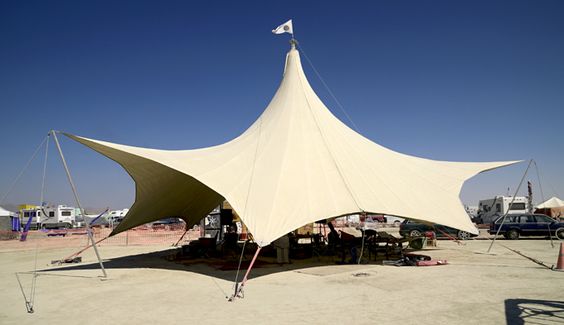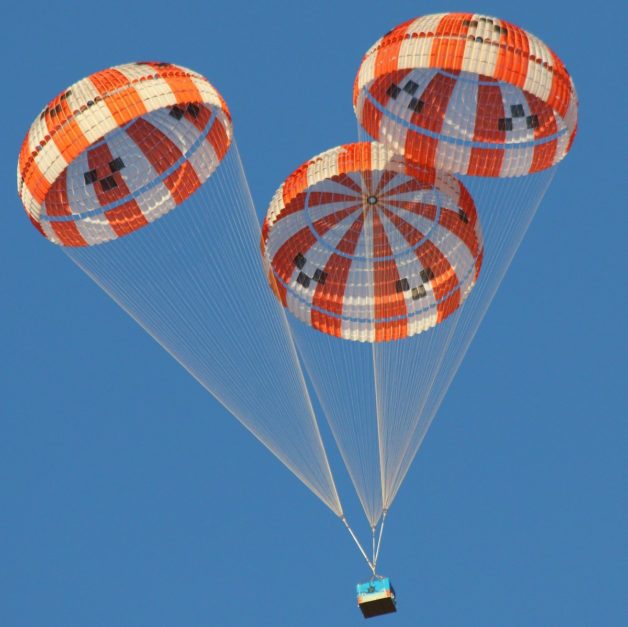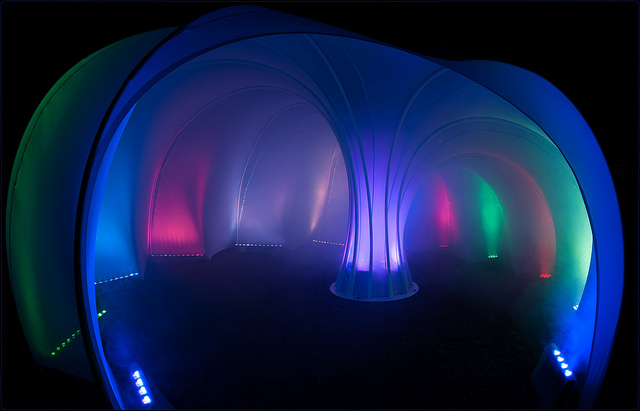Forces of Nature
Harmony From Chaos 
Harmony from chaos explores the ways of combining the tensile structure that is created by air pressure while directly and actively affected by outer elements, in this case wind, while creating an interactive relationship with the user.
The position of the user, direction of the wind and the strength have a direct effect on the structure which is controlled by parachutes. The aim is to change the purposes of the structural elements, using the columns as supports that pull the building down rather than to push and to pull the mesh structure up by parachutes.



Extracting the logic behind these 3 examples to create a structure created by tensile forces and air pressure.

The experimentation process begins with the more simple mesh structure that will allow me to create a form and to add complexity. Responsive to the position of the user and adapts accordingly.
Vol 0.1

Lifting off the mesh by parachutes that reacts to the wind, creating domes that change according to the strength and direction of the wind.
Vol 0.57 – Iteration 1

3 main parameters affect the structure; wind direction, strength, and the position of the user; as the person walks under the mesh, side columns adjust their height according to, creating space for the user while blocking the other sides.
Vol 0.57 – Iteration 2

Framing the mesh and testing out possible form-function performances.
Vol 0.57 – Iteration 3

Vol 1.00 – Iteration 1 – 2 Parachutes

Setting up an irregular form of curves and by using the user as an attractor, the height of the structure keeps changing whereas the direction of the find directly affects the sizes of the openings in the triangle frames and the strength of the pressure has a direct effect on parachutes and the roofing itself.
Vol 1.00 – Iteration 2 – 4 Parachutes

5 main parameters(parachute number, the position of the user, wind direction, pressure, and triangle count), and some other ‘background’ parameters (such as edge length) of meshes are involved in iterations.
Vol 1.00 – Iteration 3 – 5 Parachutes

Framing the mesh and testing out possible form-function performances.
Vol 1.00 – Iteration 4 – 5 Parachutes

Vol 1.00 – Iteration 5 – 5 Parachutes

It is possible to achieve a smoother and more functional form through 5 parachutes and dense triangulation.
Pseudo Code
For the final version of the structure, the logic is as follows;
- Create a polyline that will function as the base of the mesh.
- Decide the places of the parachutes and columns.
- Set up a parameter that will create the user-structure relationship.
- Create triangulation and iterate with the count.
- Set up the widths of the openings in the frames in relation to the wind.
- Create the wind and direction.
- Iterate until a satisfactory result achieved and the structure is as responsive as foreseen.
Designed: Doruk Y?ld?r?m
Faculty: Rodrigo Aguirre
Asistant: Daniil Koshelyuk, Nikoleta Mougkasi